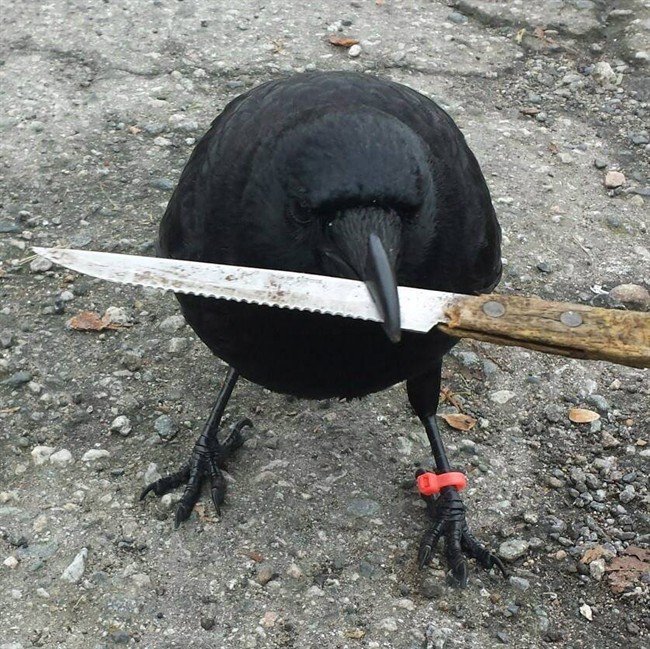In the clash of the corvids, it’s the crow who reigns supreme.

That’s according to a new study from UBC, which found that not only do crows and ravens dislike each other, the smaller bird usually comes out on top when there’s conflict.
Crows already have a reputation as crafty pack animals, something easy to spot in Metro Vancouver as they flock en masse to their Burnaby roosts every evening.
WATCH: Dive-bombing crows terrorize Vancouver’s West End

But postdoctoral fellow at UBC’s Biodiversity Research Centre and lead study author Ben Freeman said research has now confirmed their gang affiliations.
“Individuals are what grab our attention. So your average person in Vancouver knows about Canuck, this amazing crow that has escapades and shows up at crime scenes,” said Freeman.
“But what we’ve shown is that if there’s a raven around and Canuck wants to chase the raven away, he’ll get together with some other crow buddies to do that.”

Get breaking National news
The research was published in the journal The Auk: Ornithological Advances this week, and Freeman said the results were unequivocal.
WATCH: Who is Canuck the crow?

“They band together, they form small groups, and those groups of crows are able to chase ravens away,” he said.
“So in almost 100 per cent of cases, I think the actual figure was 97.5 per cent of cases where crows and ravens interact aggressively, it is the crows that are chasing away this larger bird.”
Freeman, who drew data from bird watchers and “citizen scientists” from across North America for the study, said that both crows and ravens are highly intelligent species, but it’s the crows’ social nature that allows them to come out on top.
He said ravens tend to be more solitary, and outside of the juvenile stage, tend to stick to pairs.
Freeman said that without crows’ highly developed social structure, the smaller birds wouldn’t stand a chance.
WATCH: Dive-bombing Calgary crows getting too close for comfort: ‘I’ve entered the war zone!’

“In nature, seldom do members of different species fight, as in like a boxing fight. If that were the case, a raven would beat a crow probably 99 times out of 100,” he said.
“These aggressive, antagonistic interactions are usually more low-grade, and in this case it’s the smaller crows that get together and just constantly chase and harass and pester ravens.”
Freeman also said the animosity between the two species is very real.
He chalked that up partly to the fact both types of birds are competing for the same food sources, with one exception: ravens also enjoy snacking on crow eggs.
But despite the ravens’ bigger size and predatory predilections, Freeman said they’re generally shut out of urban and and agricultural areas by their smaller cousins.
“If you could magically remove crows from the picture, ravens would love to live in Vancouver and eat the food that we put out,” Freeman said.
“But because crows are here and they’re social, they’re able to be the corvid that lives in cities.”












Comments